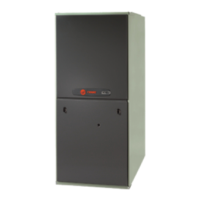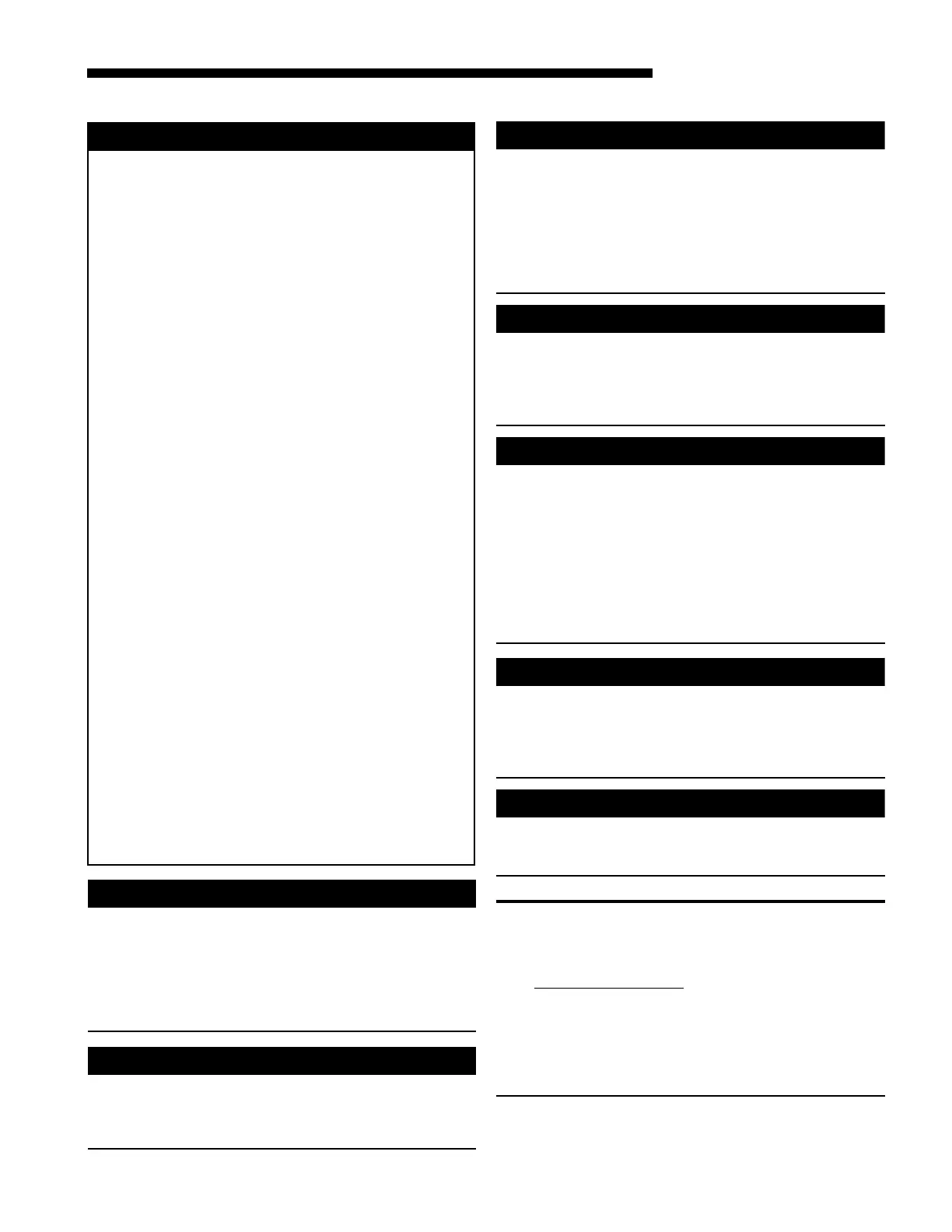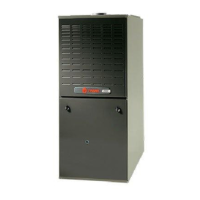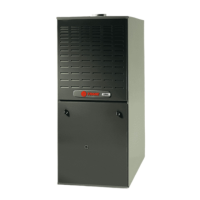
 Loading...
Loading...
Do you have a question about the Trane UHMB060ACV3VA Series and is the answer not in the manual?
| Model | UHMB060ACV3VA |
|---|---|
| Series | UHMB |
| Efficiency Rating | 80% AFUE |
| Blower Type | Variable Speed |
| Blower Motor | ECM |
| Stages | Single Stage |
| Ignition | Hot Surface Ignition |
| Heating Capacity | 60, 000 BTU/h |
| Fuel Type | Natural Gas |
| Gas Valve | Single Stage Gas Valve |
| Heat Exchanger | Aluminized Steel |
| Warranty | 5-Year Limited Warranty on Parts |
Detailed technical data for various furnace models, including ratings, blower, combustion fan, and heat exchanger specs.
Critical warnings regarding electrical shock, fire, explosion, and carbon monoxide hazards during operation and servicing.
Visual identification of key furnace components including the burner box, vacuum hose routing, and control board.
Procedure for trained personnel to access and navigate the furnace's user interface for settings and diagnostics.
Overview of the user interface menus for system status, information, and setup options.
Detailed steps for furnace operation when controlled by a communicating comfort control system.
Steps for furnace operation using a standard 24VAC thermostat control system.
Instructions for setting and verifying manifold gas pressures for accurate furnace operation.
Guide for setting up the furnace to operate in a standalone contingency mode with defined duty cycles.
Procedure for the IFC to learn optimal speeds for pressure switches PS1 and PS2 during heating cycles.
Annual inspection guidelines for furnace installation, flue pipes, and vent connectors to ensure safety and performance.
Routine maintenance procedures for filters, blowers, igniters, burners, heat exchangers, and condensate drains.
Electrical schematics, wiring, and diagnostic codes for UHM series furnaces.
Electrical schematics, wiring, and diagnostic codes for DHM series furnaces.
Tables showing UHM furnace heating airflow (CFM) and power (Watts) vs. external static pressure.
Tables showing UHM furnace cooling airflow (CFM) and power (Watts) vs. external static pressure.
Tables showing DHM furnace heating airflow (CFM) and power (Watts) vs. external static pressure.
Tables showing DHM furnace cooling airflow (CFM) and power (Watts) vs. external static pressure.
Comprehensive list of fault codes, their descriptions, and associated alert groups for furnace diagnostics.
Explanation of LED indicators on the IFC board and how alert codes are recovered and displayed.
Diagram illustrating the layout and location of components on the Integrated Furnace Control (IFC) board.
A table mapping RED LED flash counts to specific error codes and their meanings.
A flowchart guiding initial troubleshooting steps based on power supply and user interface status.
Step-by-step guide for diagnosing and resolving the 2 Flash Fault LED error related to ignition and gas pressure.
Diagnostic steps for the 3 Flash Fault LED error, focusing on pressure switch issues and inducer motor operation.
Flowcharts to diagnose faults indicated by 4 flashes on the LED, covering high limit, auxiliary limit, and reverse flow issues.
Further troubleshooting steps for 4 Flash Fault LED errors, including burner alignment, flame direction, and flue piping.
Diagnostic procedure for the 5 Flash Fault LED error, related to the flame sensor and gas valve issues.
Steps to diagnose 6 Flash Fault LED errors concerning incoming voltage polarity and ground connections.
Troubleshooting for 6 Flash Fault LED errors involving the ignitor, triac, and AC voltage to the ignitor.
Procedure to resolve the 7 Flash Fault LED error, indicating an external gas valve circuit issue.
Steps to diagnose the 8 Flash Fault LED error, related to low flame sensor current.
Guide for the 9 Flash Fault LED error, typically indicating an inducer limit or venting system issue.
Steps to resolve 10 Flash Fault LED errors related to communication issues between the IFC and other components.
Further troubleshooting for 10 Flash Fault LED errors involving system clock or 24V communication mismatches.











